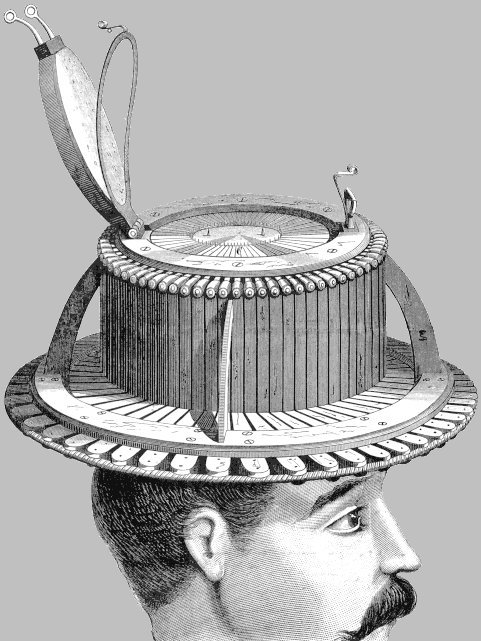Narrow Perception
Today, we look at the world through a narrow slit. The University of Houston's College of Engineering presents this series about the machines that make our civilization run, and the people whose ingenuity created them.
I was trying to swat a fly the other day when it struck me how fast and elusive that fly was. It takes an eternity for a creature of my great size to perceive the fly, process the information, send a signal to my muscles, then move my hand. The fly is a micromachine with short neural paths and tiny parts to activate. It must watch me as though I were moving in slow motion. It struck me that the fly has a world-view that's incomprehensible to me. Our whole sense of time is molded to our limited range of responses.
And that's just motion. Try vision. The electromagnetic spectrum runs from gamma and cosmic rays in the neighborhood of a billionth of an inch long, up to radio waves, which might be miles in length. Within that range, the wavelengths you and I see as light occupy an almost inconsequential range of ten to twenty millionths of an inch. We look at the world through a tiny slit.
Our hearing likewise responds to a miniscule range of pressure waves in air. We hear from maybe 40 to 20,000 cycles per second when we're young. Consider that ultrasound runs to frequencies in the millions -- that weather might vary in cycles per day or week -- and you have an idea of what you're missing. Imagine, if you dare, a creature capable of listening to the weather.
I recently saw a 3-D I-MAX movie about 3-D vision -- about how our eyes create 3-D images in our heads. The movie included a very surprising trick. It showed stereopticon movies shot with the two cameras placed very far apart. The results showed how the world would look, seen through the eyes of a giant.
Our eyes are only two-and-a-half inches apart. They give us a good sense of the three-dimensionality of nearby objects. For long distances, it's as though we're looking at a flat picture. These images from widespread cameras provide immense depth of field as we view people on a long beach, or cars a block away. We're suddenly giants looking into a doll's house.
I could go on. Our senses of taste and smell are restricted by our chemical receptors. You and I can feel temperature changes in a range of only about a hundred degrees Fahrenheit -- sixty degrees Celsius. Beyond that our nerves either freeze or they burn.
For four centuries now, we've been honing instruments to show us the world beyond that narrow slit of our perceptions. We've come very far. Yet, in the end, we read our meters and computer outputs from behind that slit. We seem forever forced to view the larger world that science shows us through a glass darkly. That's a pretty humbling limitation. It leaves me wondering how far the universe will prove to reach beyond the bunker of my own body.
Perhaps even time itself is part of our body-imposed limitations. So, until time tells, I shall have to content myself with asking the cat what she sees that I cannot -- what she knows about life that I never will.
I'm John Lienhard, at the University of Houston, where we're interested in the way inventive minds work.
(Theme music)
I come at these ideas from a very different direction in Episode 1363.
